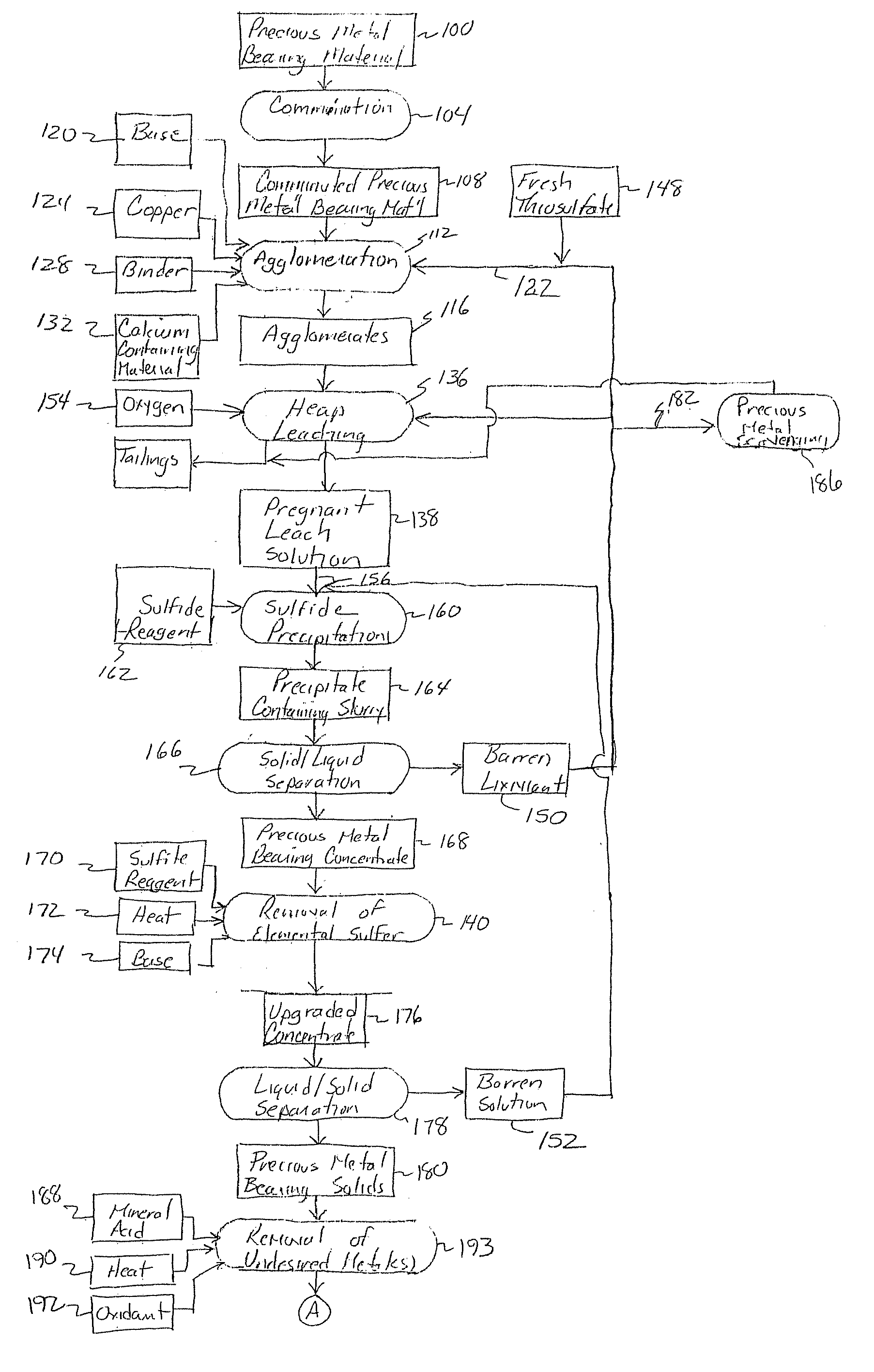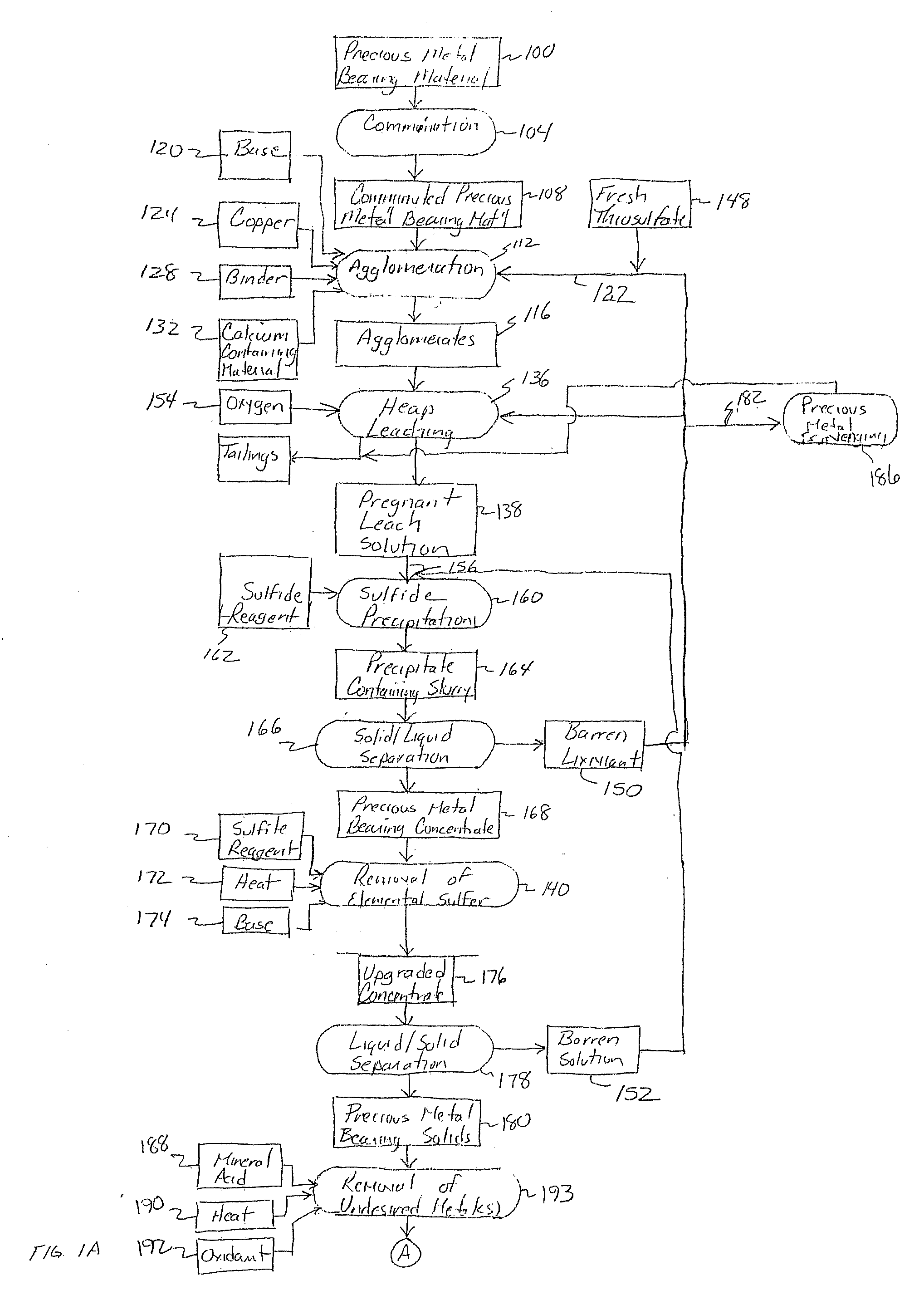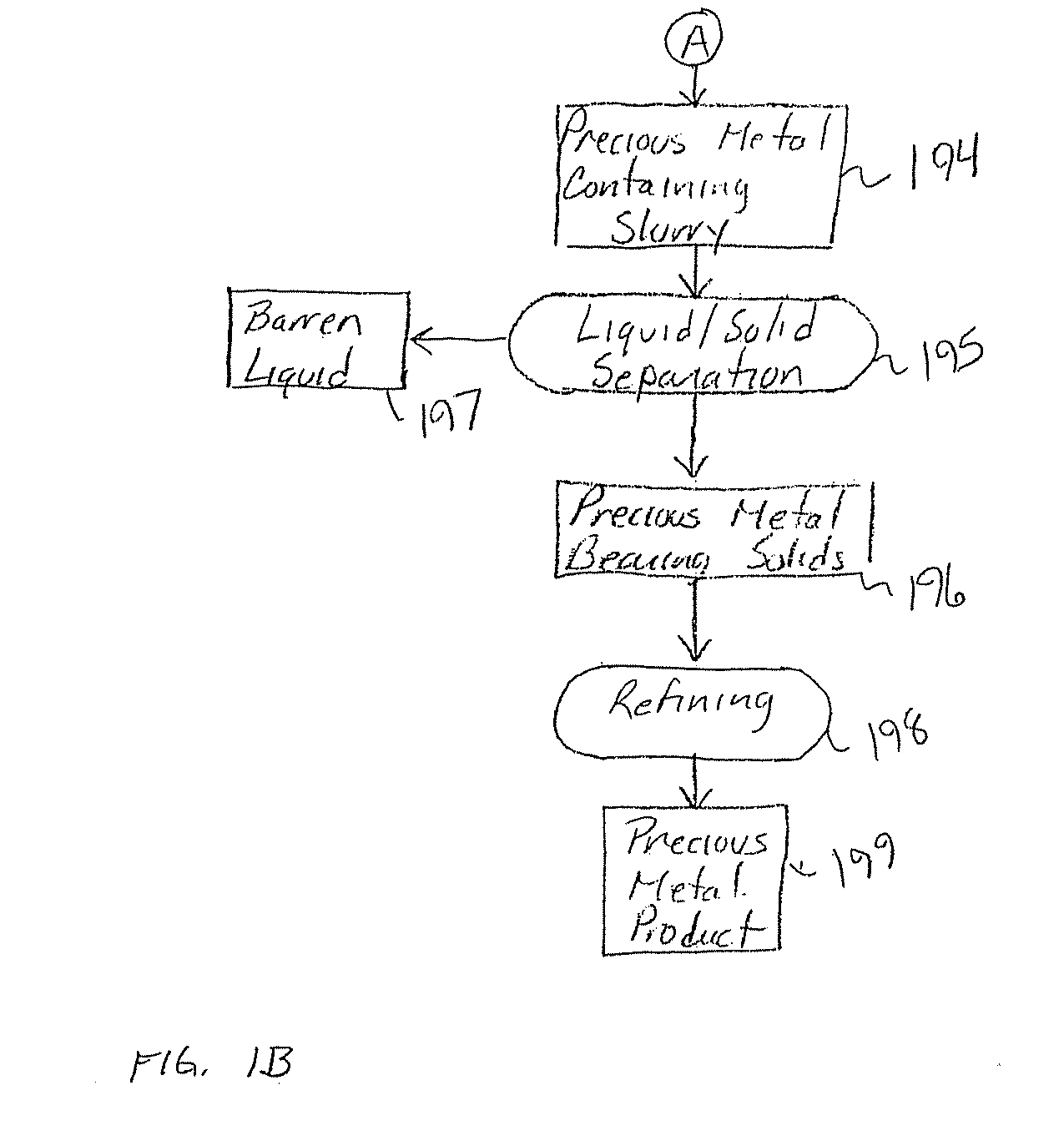Method for thiosulfate leaching of precious metal-containing materials
- Summary
- Abstract
- Description
- Claims
- Application Information
AI Technical Summary
Benefits of technology
Problems solved by technology
Method used
Image
Examples
example 1
[0103] The gold grade increased from 0.6 wt % in the sludge to 25 wt % in the residue when using as low as 25% excess sodium sulfite (Na2SO3) (as defined by the excess of reagent applied above the stoichionmetric requirement for 100% conversion of the elemental sulfur content of the sludge) at 100° C. for 70 to 120 minutes. The gold grade of the residue was 42 times larger than the gold grade of the sludge. As low as 8% of the original gold content of the sludge redissolved. Greater than 99% of the sulfur content of the sludge was converted primarily to thiosulfate. The sulfur content decreased from 87 wt % in the sludge to 16 wt % in the residue. The pH of the thiosulfate-rich solution remained above pH 9 without the need to add a base.
example 2
[0104] The gold grade increased from 0.02 wt % in the sludge to 1.8 wt % in the residue when using as low as 31% excess ammionium bisulfite (NH4HSO3) at 100° C. for 22 minutes. The gold grade of the residue was 90 times larger than the gold grade of the sludge. The pH of the thiosulfate-rich solution was maintained in the range between pH 9.5 to pH 10 by using ammonia gas as a base. Greater than 99% of the sulfur content of the sludge was converted primarily to thiosulfate. The sulfur content decreased from 95 wt % in the sludge to 60 wt % in the residue.
example 3
[0105] The gold grade increased from 0.6 wt % in the sludge to 25.6 wt % in the residue when using as low as 36% excess ammonium bisulfite (NH4HSO3) at 100° C. for 60 minutes. The gold grade of the residue was 44 times larger than the gold grade of the sludge. Six percent of the original gold content of the sludge redissolved. Greater than 99% of the, sulfur content of the sludge was converted primarily to thiosulfate. The sulfur content decreased from 99 wt % in the sludge to 21 wt % in the residue. The pH of the thiosulfate-rich solution was maintained between pH 7.8 to pH 8.8 by using sodium carbonate (Na2CO3) as a base.
[0106] These examples demonstrate that the gold grade of the residue after treatment is increased over the gold grade of the feed material. The gold grade of the residue after treatment increases by the same factor independently of the reagent used or the sulfur grade of the feed material.
PUM
| Property | Measurement | Unit |
|---|---|---|
| Fraction | aaaaa | aaaaa |
| Percent by volume | aaaaa | aaaaa |
| Acidity | aaaaa | aaaaa |
Abstract
Description
Claims
Application Information
 Login to View More
Login to View More - R&D
- Intellectual Property
- Life Sciences
- Materials
- Tech Scout
- Unparalleled Data Quality
- Higher Quality Content
- 60% Fewer Hallucinations
Browse by: Latest US Patents, China's latest patents, Technical Efficacy Thesaurus, Application Domain, Technology Topic, Popular Technical Reports.
© 2025 PatSnap. All rights reserved.Legal|Privacy policy|Modern Slavery Act Transparency Statement|Sitemap|About US| Contact US: help@patsnap.com



